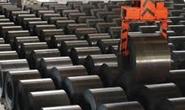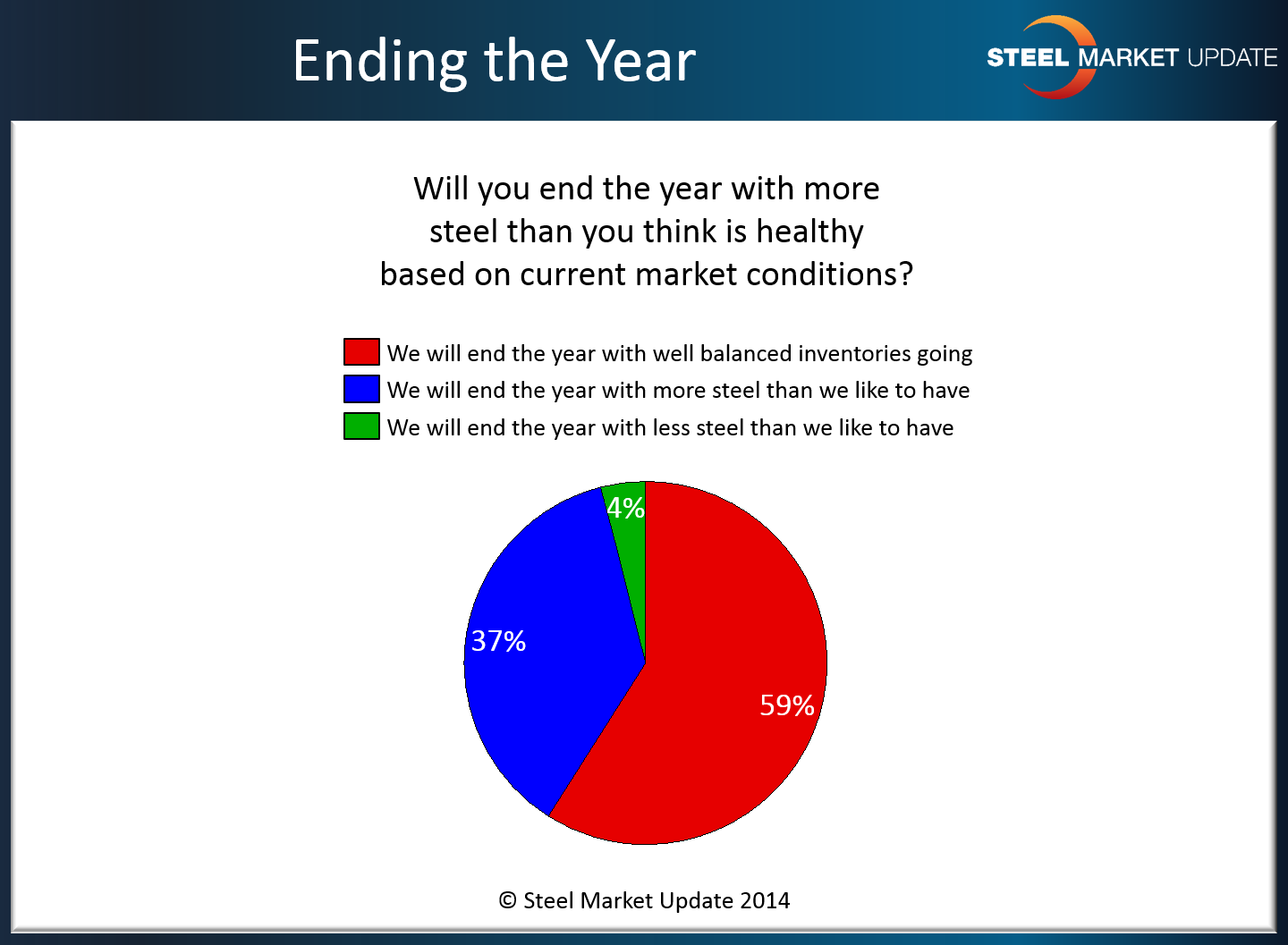SMU Data and Models

Excess Inventories a Concern for Early 2015
Written by John Packard
December 18, 2014
Steel Market Update conducted our last flat rolled steel market survey earlier today (Thursday, December 18th). During the survey process we asked some new questions in an effort to see what will be the new trending issues once we move into calendar year 2015.
One of the questions posed to those who participated in our steel survey was, “Will you end the year with more steel than you think is healthy based on current market conditions?”
We found the majority of our respondents (59 percent) believed inventories would be “well balanced” as they moved into the New Year.
What concerns SMU are the 37 percent who responded that their company would be entering 2015 with more steel than they would like.
Only 4 percent reported that they will have less steel than they would like to have as they go into the New Year.

John Packard
Read more from John PackardLatest in SMU Data and Models

SMU Survey: Sheet lead times ease further, plate hits one-year high
Steel buyers responding to this week’s SMU market survey report a continued softening in sheet lead times. Meanwhile, plate lead times have moderately extended and are at a one-year high.

SMU Survey: Buyers report more price flexibility from mills
Nearly half of the steel buyers responding to this week’s SMU market survey say domestic mills are showing increased willingness to negotiate pricing on new spot orders. This marks a significant shift from the firmer stance mills held in prior weeks.

SMU Survey: Buyers’ Sentiment Indices fall
Current Sentiment Index dropped six points to +42 this week compared to two weeks earlier. It has fallen in every successive survey since reaching a 2025 high of +66 on Feb. 19.

March service center shipments and inventories report
Steel service center shipments and inventories report through March 2024.

Apparent steel supply contracts in February
The amount of finished steel that entered the US market in February receded from January’s peak, according to our analysis of Department of Commerce and American Iron and Steel Institute (AISI) data.

